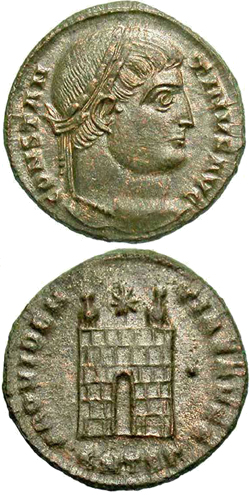
Local Television
for Santa Clarita
(webmaster)
(webmaster)
(webmaster)
(webmaster)
(webmaster)
Parade (webmaster)

3126171
Guest Commentary
|
Executive Director, Ancient Coin Collectors Guild
The Signal newspaper (Santa Clarita, Calif.)
Sunday, January 14, 2007
| S |
Along with this growth of cross-cultural contacts, a new interest in peoples of other lands has emerged. Inevitably, that interest leads to a rendezvous with history. The question is not merely, "Who are we?" but also, "How did we come to be who and what we are?"
As we search for answers to these questions, the most relevant sources are images and artifacts. Touching a piece of the past often triggers an emotion that borders on the spiritual. It is in that moment that a collector is born.
Collectors come in a multitude of varieties — all ages and all walks of life. The one thread that binds all private collectors is the element of ownership. Collectors universally take great pride in the fact that they possess the objects of their admiration, whether postage stamps or rare Greek vases.
As Joseph Alsop pointed out in "The Rare Art Traditions," this aspect of collecting can be traced back to the days when man lived in caves. It is a natural condition of our species.
|
These objects, referred to as "cultural property," ought to be carefully controlled and preserved by stewards of the public trust, some think. Further, there are those who believe that cultural property should be transferred from its point of origin only under strict state controls.
While this might sound altruistic, in practice, the objects in question are often far from national treasures or rare links to the past. Under the UNESCO accord of 1970, the definition of "cultural property" includes:
"Flora, fauna, minerals, anatomy or objects of paleontological interest; objects relating to history, including the history of science and technology and military and social history, to the life of national leaders, thinkers, scientists and artists and to events of national importance; products of archaeological excavations (including regular and clandestine) or of archaeological discoveries; elements of artistic or historical monuments or archaeological sites which have been dismembered."
Further, the definition covers: "Antiquities more than 100 years old, such as inscriptions, coins and engraved seals; objects of ethnological interest; property of artistic interest, such as pictures, paintings and drawings produced entirely by hand on any support and in any material (excluding industrial designs and manufactured articles decorated by hand); original works of statuary art and sculpture in any material; original engravings, prints and lithographs; original artistic assemblages and montages in any material."
The list goes on to include: "Rare manuscripts and incunabula, old books, documents and publications of special interest (historical, artistic, scientific, literary, etc.) singly or in collections; postage, revenue and similar stamps, singly or in collections; archives, including sound, photographic and cinematographic archives; articles of furniture more than one hundred years old and old musical instruments."
We are literally surrounded by cultural property every day of our lives.
How, in a global environment, can it be possible to restrict the transfer of such a broad class of objects between nations?
Those who strive to do just that are called "cultural property nationalists." They reject the concept of legitimate markets for cultural property, and are especially active in their efforts to repatriate cultural property to its point of origin.
Under the subterfuge of recovering "stolen property," they indiscriminately attack collectors and institutions as being complicit with "looters."
To these nationalists, even a collector of common coins and postage stamps from the past is anathema. They launch vicious attacks in the national media against the collector community, referring to ordinary citizens who happen to collect what UNESCO calls "cultural property" as greedy and unscrupulous supporters of terrorism and looting.
That the charges are blatant propaganda and disinformation seems not to matter.
By anyone's definition of the word, these are zealous radicals. We should simply ignore their aberrant view — except that they are typically very highly educated, articulate, well-endowed financially, and persistent. They can and do hold seminars and conventions at will, and employ all of the substantial resources of academia in their efforts.
They preach a tale of massive destruction of the past, and they assure decision makers in Congress and the State Department that the only solution is to place control and stewardship in their hands.
It is a persuasive argument on the surface, and many times a busy legislator or executive department decision maker does not have time to evaluate all of the nuances and details.
Collectors, lacking the string of credentials, the institutional backing or the time to mount an effective defense are left without a voice in the decision making process.
The one weapon that collectors do have in this cultural property war is the will of the people. In a democracy, the common man has a powerful voice when raised in unison.
That reality has hit home with more than one politician in the not too distant past.
If you are a collector of anything on the list above, you owe it to yourself to learn more about the movement to restrict collecting of "cultural property." If something seems awry, speak out.
If you are not a collector, but you believe in personal property rights and individual freedoms, you might be concerned about the direction this sort of mentality is taking us.
©2007 WAYNE G. SAYLES / SCV COMMUNICATIONS GROUP INC.

